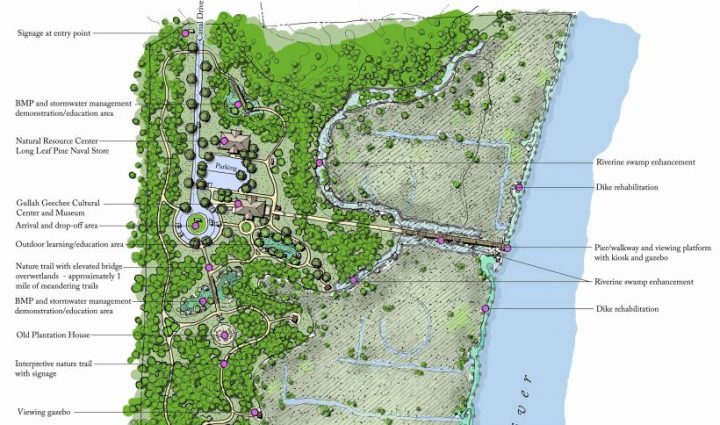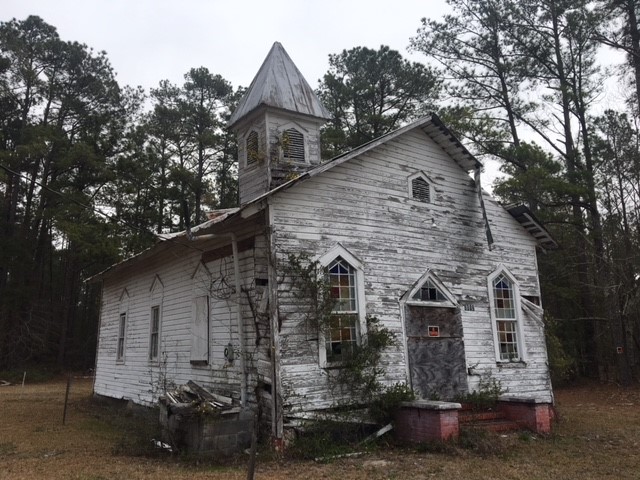
NAVASSA – Before industry brought the promise of jobs and hope of economic viability in this small town, enslaved West Africans worked in rice fields that peppered the landscape.
Cultivating rice was a demanding, tedious process — one that was a foreign concept to English colonists, but not to the men and women plucked from their tribes in the rice growing region of West Africa.
Supporter Spotlight
Today those slaves and their descendants, the Gullah Geechee, are nationally recognized through the establishment of the Gullah Geechee Cultural Heritage Corridor, which runs up the southern Atlantic Coast from St. John’s County, Florida, to Pender County.
Their stories and rich culture are shared at some of the very plantations and one-time isolated barrier islands on which they were enslaved.
Navassa aims to become another voice of the Gullah Geechee by establishing what would be the first cultural heritage center in the state dedicated to preserving the stories of those slaves who worked the rice plantations along river banks in southeastern North Carolina.
The center would be a source of pride in a town that has suffered at the hands of the very thing it at one time counted on — industry — to spur an economic boost it still desires today.
“It would be a way for my folks to identify themselves to the world forever,” Eulis Willis, the town’s longtime mayor, said of a cultural center. “It would be a way to help us achieve some independence.”
Supporter Spotlight

An ideal spot for the proposed Moze Heritage Center and Nature Park is within an 82-acre plot identified as the eastern uplands portion of the former Kerr-McGee Chemical Corp. site.
It’s within this part of the property off the banks of the Brunswick River and Sturgeon Creek that some of the rice fields owned and managed by a member of the prominent and powerful South Carolina Moore family thrived.
In 2010, the U.S. Environmental Protection Agency added the property to its National Priorities List of federal Superfund sites.
The EPA, state and various trusts have for years been investigating the extent of the contamination and discussing sufficient ways to remediate that contamination. Those agencies and trusts have been working with the townspeople to determine future uses for the property.
Years before this collaboration began, Willis was toying with the idea of creating some type of ecotourism in the town.
“Trying to reestablish the town itself, I realized that for us to live a decent life we had to try to develop in some way our own economy,” he said.
It wasn’t until 2006, when he was one of five North Carolinians selected to be on a committee to oversee the development of the Gullah Geechee Cultural Heritage Corridor, Willis thought about tying in the Gullah Geechee’s history in southeastern North Carolina as a tourism draw for the town.
“I got on the commission and boy, did my education begin,” Willis said. “The thing that was amazing to me was that in North Carolina we didn’t have as much of the culture. The native North Carolinians (Gullah Geechee) didn’t have as much of the cultural traits.”
That’s because, Willis said, Gullah Geechee in this state were not as isolated as those on barrier islands and remote plantations in South Carolina and farther south.
“We didn’t ever get isolated like that,” he said.
The proposed center and nature park would include walking trails, a pier and kayak launch, and restored marsh and riverfront.
The town has partnered with the North Carolina Coastal Land Trust to acquire land for the project.

Last year, the Coastal Land Trust purchased and began work to restore Reaves Chapel, a church the trust describes on its website as “one of the Cape Fear region’s most culturally and historically significant African American structures.”
The little, wooden church in Navassa was built shortly after the Civil War near the Cape Fear River by those enslaved on the Cedar Hill Plantation.
Edward Reaves, a former slave, owned the parcel the church was moved to by its congregants in 1911.
The church will be restored and used as a gathering place for the townspeople, many of whom, like Willis, have historical ties to the Gullah Geechee.
Revelations of Willis’ heritage have come to light throughout his years of research. He has a great-great-grandmother whose name is listed in a rice-planting book dated 1861-62 from Hickory Hall Plantation.
Willis has traced his family tree to Charley Waddell, who is believed to be the first black man to buy land in Navassa in 1875.
“I’m still not an expert on the culture, but it doesn’t escape me,” Willis said, adding that he feels a kinship with the Gullah Geechee because of his ancestry.
“Here’s an opportunity for my folks to not only save the culture, but make a little money and get a little bit more independence,” he said. “It’s going to take maximum effort from some smart people. I want it to stay owned and operated in this community. I want it to be something that not only we can be proud of, but anybody who comes to visit it will have a good experience.”








